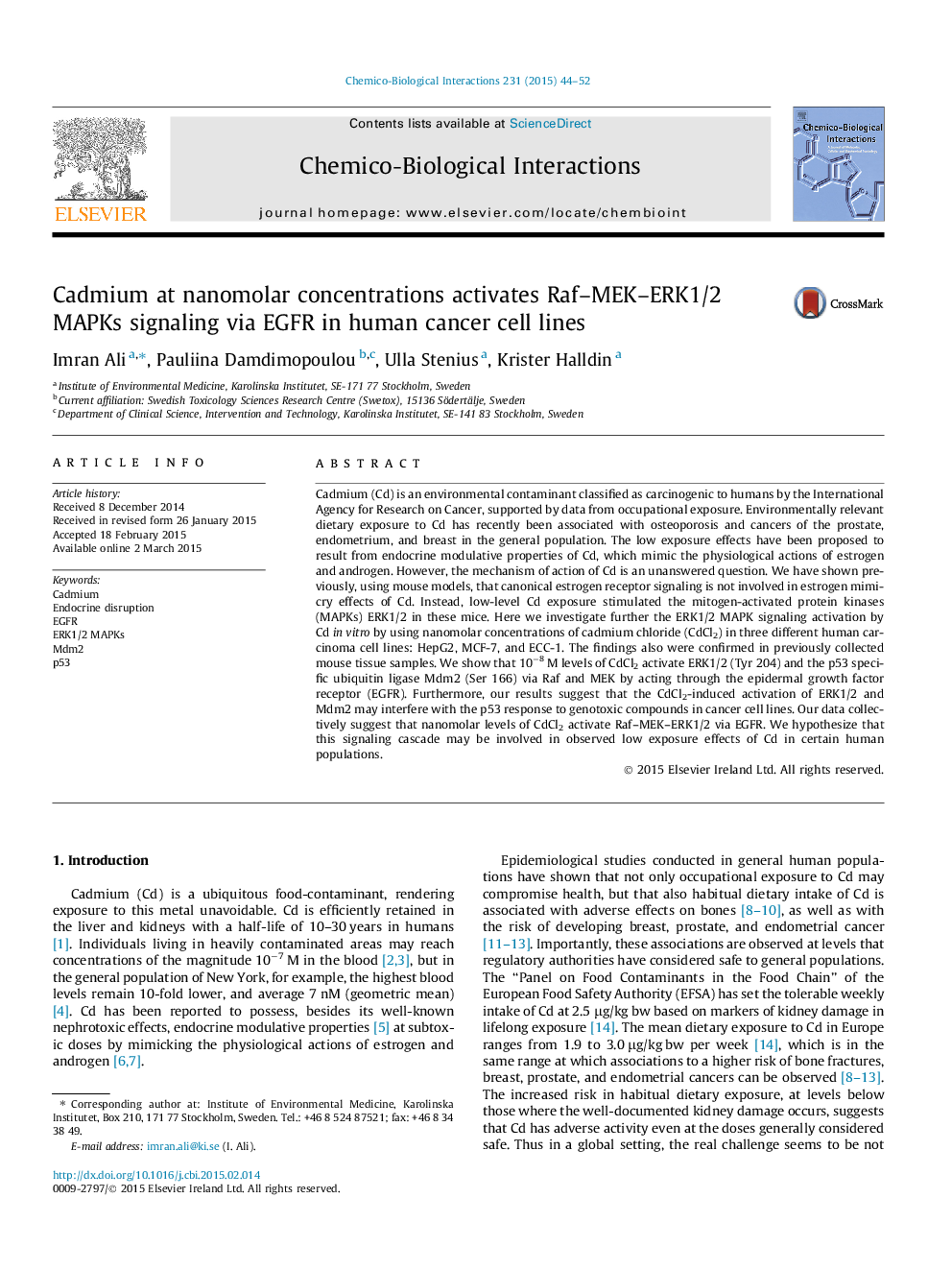| Article ID | Journal | Published Year | Pages | File Type |
|---|---|---|---|---|
| 5847856 | Chemico-Biological Interactions | 2015 | 9 Pages |
Abstract
Cadmium (Cd) is an environmental contaminant classified as carcinogenic to humans by the International Agency for Research on Cancer, supported by data from occupational exposure. Environmentally relevant dietary exposure to Cd has recently been associated with osteoporosis and cancers of the prostate, endometrium, and breast in the general population. The low exposure effects have been proposed to result from endocrine modulative properties of Cd, which mimic the physiological actions of estrogen and androgen. However, the mechanism of action of Cd is an unanswered question. We have shown previously, using mouse models, that canonical estrogen receptor signaling is not involved in estrogen mimicry effects of Cd. Instead, low-level Cd exposure stimulated the mitogen-activated protein kinases (MAPKs) ERK1/2 in these mice. Here we investigate further the ERK1/2 MAPK signaling activation by Cd in vitro by using nanomolar concentrations of cadmium chloride (CdCl2) in three different human carcinoma cell lines: HepG2, MCF-7, and ECC-1. The findings also were confirmed in previously collected mouse tissue samples. We show that 10â8Â M levels of CdCl2 activate ERK1/2 (Tyr 204) and the p53 specific ubiquitin ligase Mdm2 (Ser 166) via Raf and MEK by acting through the epidermal growth factor receptor (EGFR). Furthermore, our results suggest that the CdCl2-induced activation of ERK1/2 and Mdm2 may interfere with the p53 response to genotoxic compounds in cancer cell lines. Our data collectively suggest that nanomolar levels of CdCl2 activate Raf-MEK-ERK1/2 via EGFR. We hypothesize that this signaling cascade may be involved in observed low exposure effects of Cd in certain human populations.
Related Topics
Life Sciences
Environmental Science
Health, Toxicology and Mutagenesis
Authors
Imran Ali, Pauliina Damdimopoulou, Ulla Stenius, Krister Halldin,
